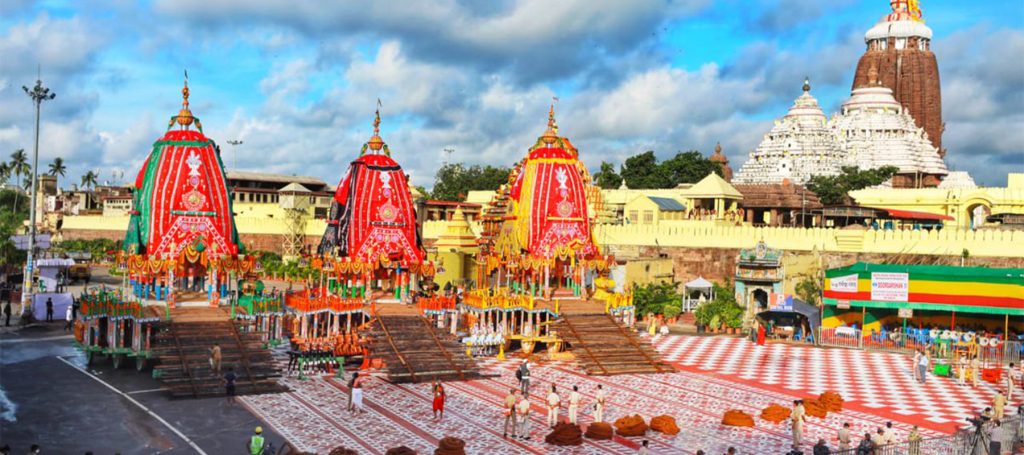Rath Yatra, the grand chariot festival of Puri, Odisha, is one of India’s most awe-inspiring and spiritually significant celebrations. Held annually in the months of June or July, this vibrant festival marks the sacred journey of Lord Jagannath, along with his elder brother Lord Balabhadra and sister Goddess Subhadra, from the iconic Jagannath Temple to the Gundicha Temple. This journey, which symbolizes the annual visit of the deities to their birthplace, is steeped in ancient rituals and legends that have captivated devotees for centuries.
The festival begins at the Lion Gate (Singhadwara) of the Jagannath Temple, where the deities are ceremoniously brought out amidst the resonating beats of drums, conch shells, and the chanting of mantras. These deities, considered living gods, are placed on three massive, intricately decorated wooden chariots, each crafted with immense devotion and precision by skilled artisans. The chariots are marvels of traditional craftsmanship, built anew every year from wood sourced from specific sacred trees. The preparation of these chariots begins on Akshaya Trithiya, a day considered highly auspicious in Hindu tradition, symbolizing prosperity and eternal success.
Each of the three chariots has its own unique identity. Lord Jagannath’s chariot, called Nandighosha, is a towering 45 feet high, adorned in red and yellow, with 16 wheels. Lord Balabhadra’s chariot, Taladhwaja, is decorated in green and red, standing at 44 feet with 14 wheels, while Goddess Subhadra’s chariot, Darpadalana, is 43 feet tall with 12 wheels, draped in black and red. The colors and symbols on each chariot are not just decorative but hold deep spiritual significance, representing the divine attributes and powers of the deities they carry.
The journey of the deities from the Jagannath Temple to the Gundicha Temple, known as the Rath Yatra, is an extraordinary event. Devotees from around the world flock to Puri to witness and participate in this divine procession. The sight of the chariots, as they roll down the grand avenue of Bada Danda, pulled by thousands of devoted hands, is nothing short of mesmerizing. This act of pulling the chariots is believed to bestow immense spiritual merit, drawing participants closer to the divine.
One of the unique aspects of Rath Yatra is that it offers devotees the rare opportunity to see and touch the deities, a privilege not available on regular days when the gods reside within the sanctum of the Jagannath Temple. This close interaction with the divine during Rath Yatra is said to cleanse the soul and bring divine blessings.
After spending seven days at the Gundicha Temple, the deities embark on their return journey to the Jagannath Temple, an event known as Bahuda Yatra. On their way back, they stop at their maternal aunt’s home, the Mausi Maa Temple, where they are offered Poda Pitha, a special sweet delicacy. Before entering their temple abode, they must appease Goddess Mahalakshmi, who is believed to be upset for being left behind. This playful interaction between the gods adds a touch of humanity to the divine narrative, making the festival even more endearing to the devotees.
Rath Yatra is not just a festival; it is a grand spectacle of devotion, faith, and tradition that transcends the boundaries of religion and culture.


